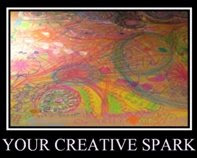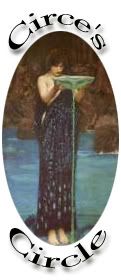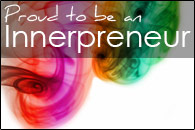 Heather Plett likes to play with words, paint, and photos over at her blog (www.fumblingforwords.blogspot.com). In her day job, she leads a national team of fundraisers and public relations professionals, some of whom like to get down on the floor with scissors and glue and others who do not. She has used dreamboarding in a variety of leadership roles to help teams explore possibilities and dreams.
Heather Plett likes to play with words, paint, and photos over at her blog (www.fumblingforwords.blogspot.com). In her day job, she leads a national team of fundraisers and public relations professionals, some of whom like to get down on the floor with scissors and glue and others who do not. She has used dreamboarding in a variety of leadership roles to help teams explore possibilities and dreams.“Okay, now push away from the table, take your scissors and glue and get down on the floor.”
I don’t think they’d ever heard those words before at a business meeting. Some of them looked at me reluctantly (“you want me to do WHAT?), and others jumped up eagerly (“you mean I get to PLAY?). Once I’d convinced even the resisters to get down on the floor, I passed around large sheets of construction paper and stacks of old magazines.
This was an annual planning meeting for my team. Instead of facilitating a traditional strategic planning exercise, where-in we spend tedious hours coming up with carefully worded (and dreadfully boring and uninspiring) goals, objectives, and action plans, I decided to try something a little different. “Flip through the magazines,” I said. “There are no rules for this exercise. Just start cutting out pictures and words that inspire you. Try to imagine the possibilities for our team for the coming year. What do you dream of? What do you hope for? What things get you passionate? In the end, put together a picture of where you feel our team (and you as a contributor to this team) should be a year from now.”
After about an hour and a half of cutting, pasting, and creating, the group shared what they’d created. Some had used mostly words, others had only pictures. Some had very organized categorized boards, others had random scattered images. One of the artists in our group had embellished hers with coloured pens. Each board was unique and each said something important about where our team was going. The common themes we found running through most of the dreamboards became the basis for our annual plan for the coming year. The ideas that were not common between boards were tested with other team members before being added to the whole.
Dreamboarding at work. Have you ever tired it? Why not consider it next time your team needs to gather for strategic planning/visioning/etc.?
Here are a few of the things I’ve learned after doing this a number of times with different teams:
- When individuals have completed their dreamboards, you may want to combine them all into a large collage. Another option would be to work on one common dreamboard from the start, where everyone contributes to a large board with their own ideas. If you do a common board, make sure everyone feels like an equal and honoured participant.
- Draw out some of the surprising, unusual, or risky pieces you see in the boards that some people might be reluctant to share. Sometimes the best ideas are the ones that are the most hidden. Create a space where team-members are safe to be vulnerable.
- People will respond very differently to this exercise. Some will jump in eagerly, and some will offer a great deal of resistance. If you anticipate that more than half of your team will be resisters and you’ll have a hard time getting anything meaningful out of it, you may want to consider small steps to work up to this. For example, the first time you step away from more traditional strategic planning exercises, you may want to start with word play - write down all the words that come to your mind when you think of where your team should be next year. (It’s a little less threatening than getting down on the floor.)
- Watch for negative energy and try to stem the tide. A few resisters can ruin it for the more eager participants. Find a way to respect their fear or blockage and then help them work past it toward a place of possibilities.
- When it comes time to explain what they have created, some people may need some prompting to get to the heart of what they’re dreaming about. Some of the greatest “a-ha” moments happen after a person has put the pieces together and sees the final product.
- Consider posting the dreamboards in a shared space in your work place (lunch room, hallway, etc.) to remind people of their visions and possibilities. (Be sure you clear this with the team first, in case they’re embarrassed about having other people outside of the team see their creations.)
























5 comments:
Great post, Heather! Making a dreamboard in a work environment sounds like a great way to connect with co-workers.
Really good idea, and certainly very important to find a sensitive way to include the negative folks.
At my last job, my then boss did something a little bit similar, but pre-prepared. She asked each of us in the team (of 15) to come to our next team meeting with an object representing our individual role in the team, and explain our choice. It was really interesting, and some of the people I least expected to show imagination showed the most!
Using some visual cue can indeed make meetings more memorable and more meaningful.
Thanks, Heather, for such a great post! I'm totally inspired to think about all the different places dreamboards could go and all the different people they can serve.
The Dreamboard Circle keeps expanding - thank you!
Post a Comment